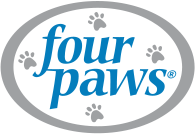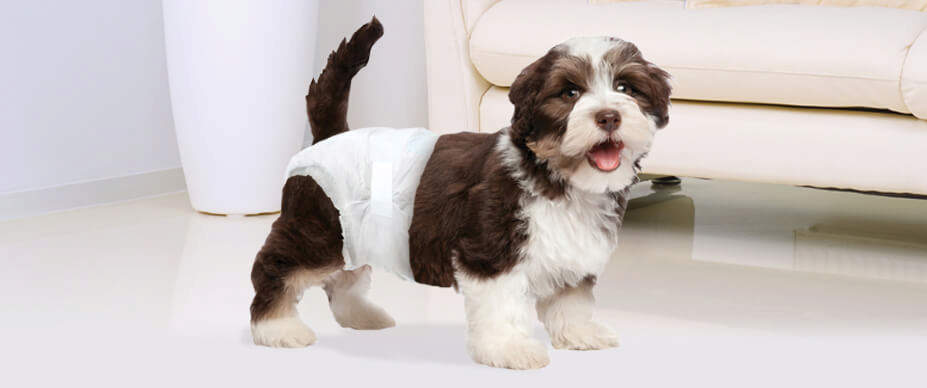A Guide to Managing Incontinence in Dogs
Dogs might experience incontinence—an involuntary loss of urination or defecation control—for a variety of reasons, such as aging, an infection, and more. It can be a troubling experience for both you and your dog, especially when you’re not sure what’s causing it. Fortunately, in most cases, you can take steps to address your dog’s incontinence and help them pursue an improved quality of life.
Incontinence differs from inappropriate elimination, which occurs when your pet relieves themselves at an improper time—usually as a result of heightened emotion or immaturity. For instance, if your dog experiences separation anxiety, the prolonged sense of panic can result in inappropriate elimination. In other cases, inappropriate elimination may be common in the puppy potty training process until your young dog learns where and when to go potty.
Learning more about incontinence can help you replace frustration with understanding. If you’ve tried unsuccessfully over time to house train your dog, incontinence might be causing the issues. Familiarize yourself with the types, symptoms, causes, and treatment of canine incontinence below.
Types of Incontinence in Dogs
Your dog might experience one or both types of incontinence—urinary and fecal. Signs, causes, and treatment for your pet’s incontinence will depend on the type of incontinence they’re experiencing.
Urinary incontinence causes an immediate urge to pee followed by a rather immediate loss of bladder control. Your dog may have only seconds between their urge to pee and bladder release, which makes urinary incontinence difficult to anticipate. Some dogs experience only mild urinary incontinence, while others lose full control over their bladders.
Your dog may also experience fecal incontinence, which is the inability to control their bowel movements. Sometimes, fecal incontinence manifests as persistent gas. In other cases, your dog might experience occasional or total leakage of stool.
Signs & Symptoms of Incontinence in Dogs
As a pet parent, stay on the lookout for symptoms that might indicate incontinence. The sooner you can positively identify potential signs of incontinence, the sooner you can connect your dog with the help they need.
Any dog can become incontinent, no matter how well they may have been potty trained. Even if your dog doesn’t typically have potty accidents in the house, they may still experience occasional incontinence.
When your well-behaved furry friend experiences these symptoms, it’s important to adopt a sympathetic approach. Avoid punishing your dog for their actions or raising your voice in a way that indicates anger or frustration. Instead, calmly respond in a comforting tone that recognizes their accident and emphasizes your patience.
A variety of signs and symptoms may indicate canine incontinence. These include:
- Spots of urine or feces around the home
- Urine or feces leaking from your dog
- More frequently required bathroom trips
- Increased water or food intake
- Evidence of painful urination or excretion
- Frequent licking of the genital area
If these indications of incontinence do not improve after a few days, consult a veterinarian for help.
Causes of Incontinence in Dogs
Under normal circumstances, you should be able to train your dog to stop relieving themselves in the house. If this condition doesn’t improve over time, incontinence might be the reason why.
There are several potential causes of incontinence in dogs. These include:
- Bladder infections or dysfunction
- Tumors
- Natural aging
- Urine retention
- Hormonal imbalances
- Injuries to the spinal cord, bladder, genitals, or other key areas
- Urinary tract infections (UTIs)
- Genetic defects
Some dogs are at an increased risk to develop incontinence based on their gender or breed. Bulldogs, Boxers, and Irish Red Setters are among the dog breeds more likely to experience incontinence. In general, female dogs are slightly more likely to develop incontinence due partially to a decrease in estrogen levels over time.
Age is also a significant factor that can affect how susceptible your dog is to developing incontinence. Older dogs may find bladder control more difficult due to muscle loss, or they may not be able to get up and move quickly when they need to pee. Senior dog incontinence can also develop as a result of a medical condition. While caring for your aging pet, take note of any loss of control during potty breaks.
Treating & Managing Incontinence in Dogs
The best treatment methods for your dog’s incontinence will depend on its cause. To help your dog overcome urinary or fecal incontinence, visit a veterinary clinic to identify the root cause of the issue. Once you find a local veterinarian you prefer, work with them to develop a treatment plan specific to your dog’s needs.
Treatment for your furry friend’s incontinence begins with your response. Remember that even fully potty-trained dogs can experience incontinence through no fault of their own. Instead of showing your dog the anger or frustration you’re feeling, respond lovingly in ways that show patience and support.
You can also take steps to help your dog manage their incontinence at home. These solutions include:
- Pee pads that can help limit the scope of your four-legged friend’s accidents and promote easy cleanup
- Doggy diapers that catch leaks before they reach the floor
- Frequent, safe walks that allow your dog the opportunity to relieve themselves outdoors
- Proper grooming to remove any urinary or fecal debris and restore your dog’s coat
These at-home solutions help limit messes, promote easy cleanup, and keep your dog comfortable. Consider one or more of the above incontinence management methods, which work well in tandem with your veterinarian’s recommended treatment plan.
If your dog is completely incontinent, you must change their diaper and sleep area or kennel regularly for both comfort and cleanliness. Check from time to time to see if your dog has emptied their bladder. With time, you will learn the times of day when your pet is most likely to be wet.
Similar to human children, dogs can develop diaper rash if their fur and skin are exposed to urine for long periods. Leaving a diaper on too long may also lead to urinary tract infections. You can reduce your dog’s chances of developing these issues by keeping your furry friend clean. A full bath isn’t necessary, but a daily sponge bath with a cleansing cloth can be helpful. Keeping your dog’s fur trimmed is also a smart way to prevent rashes and infections.








